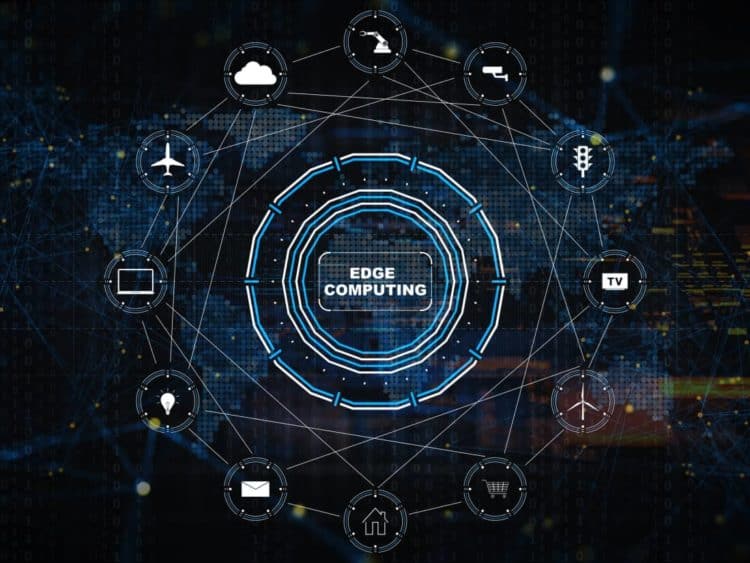Asia Pacific is set to see the highest growth in global edge computing on the back of accelerated IoT and cloud computing adoption, according to research firm, MarketsandMarkets. Globally the edge computing market is set to grow from US$ 3.6 billion in 2020 to US$ 15.7 billion by 2025, as COVID has spurred rapid digital transformation of industries and sparked a decentralisation of data and technology.
Edge computing is defined loosely as a model that brings computational, data storage and connectivity resources closer to the locations where they’re needed, saving bandwidth and accelerating response times. Edge technologies power millions of IoT applications in industrial, retail, healthcare and smart cities environments, and, prior to 2020, analysts expected an additional bump from virtual reality and 5G in the coming years.
Then the pandemic hit, and the need for edge technologies suddenly accelerated. As millions of workers shifted out of enterprise hubs into more remote locations, they put a strain on networks, creating increased latency and a greater need for computer power, capacity, and storage closer to the new network edge.
Changing roles
It’s not just workers connecting on Zoom occupying this new edge. Across the Asia region, industries and businesses are rethinking the way they operate. Video editors working from home are transmitting huge files, schools are engaging thousands of students in online classes, and physicians are conducting remote health visits where high-res images are posted and circulated. Investing in edge solutions that process data locally and enable more seamless connections avoids having to slog through increasingly overburdened public networks.
Asia will see a strong uptake of edge computing and IoT applications coming into 2021 as a lot of organisations face the pressure to create new ways of working, new ways for customer engagement and new ways of business. This will spark exponential growth in hyper-scale cloud adoption for organisations and increased effort on completing the edge computing and IoT journey. This casts a spotlight on the availability of your services and data which becomes critical in ensuring sustained success.
The proliferation of Big Data and IoT, edge computing will be a key architecture design challenge to solve respect to volume, velocity and variety of data from multiple sources. The end goal is to achieve the highly desirable outcome of data availability, data agility and business acceleration.
The prediction is for a boom in edge-related hardware, software and applications. Analysts are predicting a major growth spurt at the edge, rocketing up 30% a year to US$44.0 billion by 2030.
As enterprises accelerate investments in digital transformation projects, edge technologies will open up new opportunities to succeed in the marketplace. Here are a few areas where they’ll play prominent roles.
Customer service
Customers, of course, can be demanding. They want choices, information, intuitive purchasing options, respect for their privacy and, at times, a little coddling. Businesses can respond better in transactional situations if they can have information and insights available in the moment. This plays right to the strengths of edge applications.
Retailers, for instance, can use edge devices with web caching functions to replicate online customer experiences in the physical world. They can capture customer information, apply insights from shopping patterns, process connections in real time and be ready to serve the customer better at key points of the buying journey.
Outside the store, changeable digital displays can broadcast pop-up sales to attract customers inside. As customers enter, the network connects to their personal devices and access their purchase history. Customers then can request customised coupons or connect to personalised shopper assistance. Inside the store, strategically positioned kiosks and screens display customised promotional offers based on each shopper’s buying patterns.
Sales associates can use digital assistant devices to check updated inventory levels or gather insider product information. Easy-to-use product finder displays can steer customers to the right products based on individual, self-selected preferences.
Security
The proliferation of edge computing applications has significant – and seemingly contradictory – ramifications for security.
On one hand, adding more nodes opens up more places vulnerable to attack. This will force IT security leaders to bolster their defences to ensure that information and applications stored at the edge match the strength their applying inside the data centre itself.
At the same time, edge computing’s decentralised nature brings some security benefits. If an edge device is breached, security teams can easily wall off the endpoint, so the attack doesn’t spread to the whole network. They can also configure their edge models to keep more data at the endpoints and limit the amount of information that gets sent back to home office. That adds an extra layer of security, keeping threats away from the data centre, where more mission-critical resources are stored.
To optimise the security of an edge-enabled system, organisations will need to establish strong governance programs to control the data that’s being generated, processed and transferred from individual sites.
Plus, since IoT devices are tough to secure, it’s important that the edge computing deployment emphasises proper management of the devices themselves. They’ll need to establish policy-driven configuration enforcement and security for computing and storage, paying special attention to encryption of data at rest and in flight.
While edge security isn’t a new concept, the scale of the challenge has grown with the expansion of remote work and on-site IoT-related applications. Solving these edge security issues will be a top priority in 2021 and beyond.
This article was co-authored with Dave Russell, Vice President of Enterprise Strategy and Raymond Goh, Technical Director for Asia & Japan, Veeam Software



